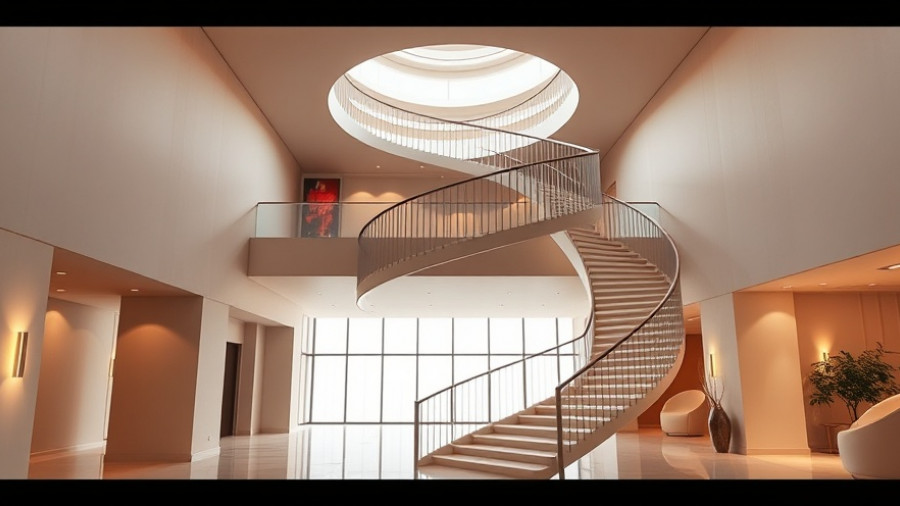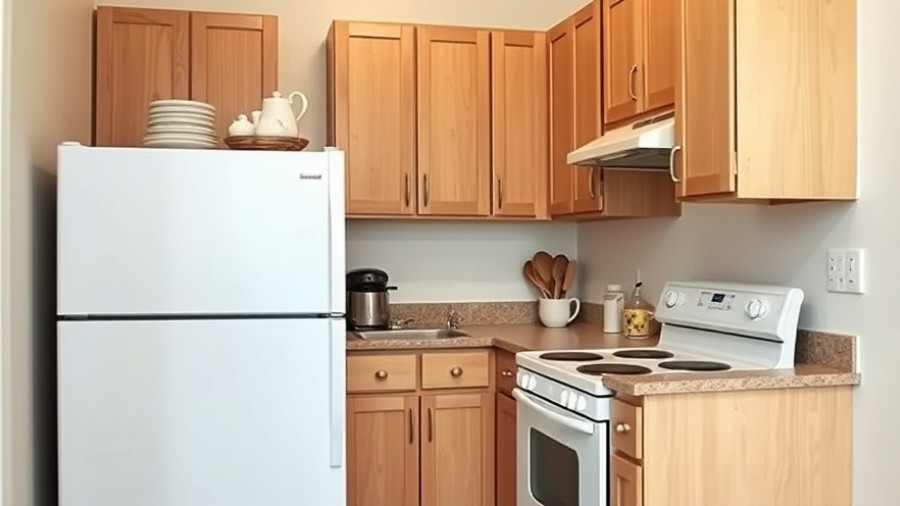
Redefining Multigenerational Living in Modern Architecture
As our societies evolve, so do our living arrangements. The need for multigenerational living spaces has surged. Families are often looking for ways to accommodate aging parents while still providing independence. One remarkable example is the recent project by i29, who designed a Senior Shelter in the Netherlands that stands as a model of thoughtful and intentional architecture, merging privacy with community.
Thoughtful Design for Connection and Independence
i29's design transcends the average housing model by promoting interaction among family members of different generations while respecting their need for independence. The single-story, 1,076-square-foot structure showcases a remarkable balance of shared and private spaces. With careful consideration, the house features exposed rafters and a minimalist, low-slung profile, ensuring that it integrates beautifully into the surrounding landscape.
Crafted from waxed wood and topped with a stylish roof that emphasizes the natural elegance of its environment, this multigenerational home elegantly asserts its purpose without dominating the area. The design promotes a serene environment enhanced by shaded patios and structured wood-clad facades. Each element is deliberate—a party of architectural finesse ensuring comfort and connection.
Embracing Nature: The Benefits of Indoor-Outdoor Living
The Senior Shelter’s central patio serves as the heart of the home, facilitating an easy indoor-outdoor transition. This openness is key to fostering a sense of community. By incorporating retractable sliding glass doors, the design allows residents to freely interact with the lush surroundings. This flexible use of space enables a lifestyle that is harmonious with nature, promoting well-being and an active lifestyle among family members.
Moreover, this seamless integration further supports an adaptive living environment tailored to the changing needs of its residents as seasons change. The solidity of this vision reflects the importance of remaining connected while allowing for personal privacy.
Adapting to The Future: Insights into Sustainable Multigenerational Homes
As families increasingly opt for multigenerational living, the significance of sustainable and adaptable designs becomes paramount. As evidenced by i29’s innovative project, modern architecture has the unique capability to accommodate diverse family models. This trends towards eco-friendly methods and materials aligns with a broader shift in society toward environmental consciousness.
Architects are now applying principles of sustainability not just for ecological reasons but as an essential component of livable spaces. The facility's integration into the environment and its use of nature-based materials like wood emphasize the growing expectation of minimal ecological footprints in our communities.
Exploring Room for Improvement: Practical Insights for Homeowners
For homeowners looking to adapt their own spaces for multigenerational living, there are vital strategies to consider. Begin by evaluating how spaces can support both communal interaction and individual privacy. For example, a layout similar to i29's—where shared areas such as kitchens and living rooms connect to personal spaces—can occupy both needs.
Additionally, consider practical enhancements that can be seamlessly integrated during renovations. Features like retractable doors, shaded outdoor areas, and accessible pathways can vastly improve the functionality and intimacy of your home.
Conclusion: The Future of Home Design
i29's Senior Shelter in the Netherlands serves not just as a residence but as an exemplar of how thoughtful architecture can meet the needs of our evolving family structures. By focusing on connection, sustainability, and adaptability, it sets a new standard for modern homes. As you think about your own living spaces, consider how these insights could be relevant to your family, and embrace the potential of innovative design.
Are you interested in exploring more about how intelligent design can transform your living space for better family connectivity? Mastering this art could redefine how you experience home.
 Add Row
Add Row  Add
Add 




Write A Comment